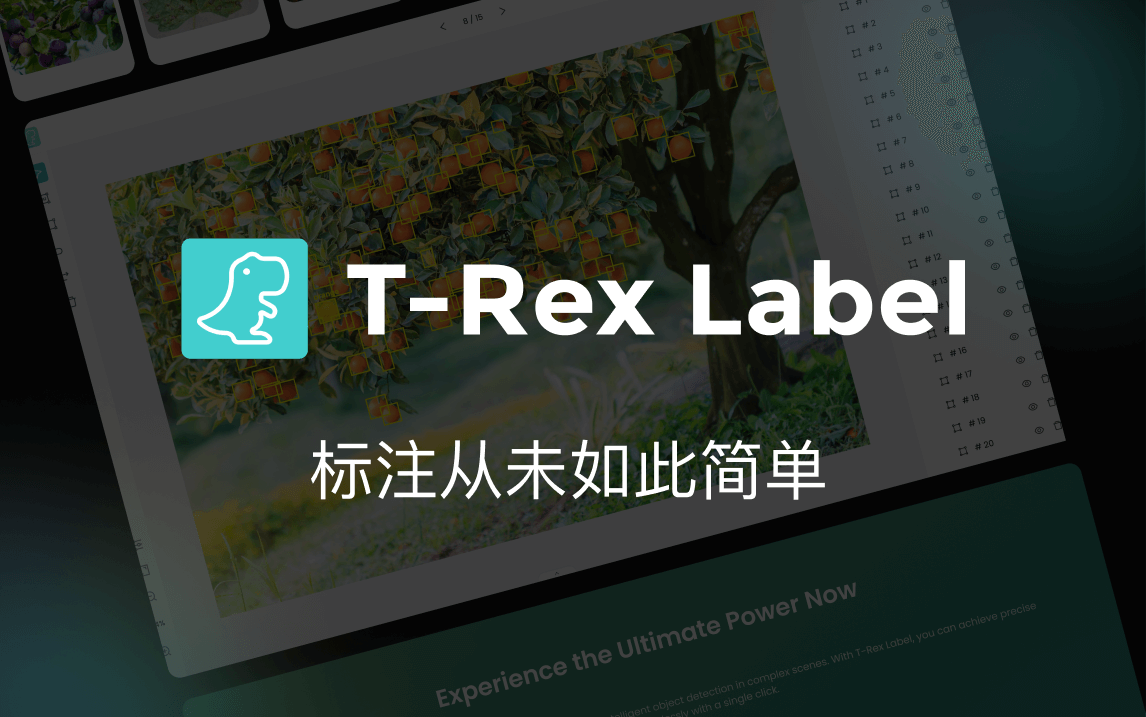Table of Contents
Overview
Tired of spending countless hours manually labeling images for your computer vision projects? Enter AI Auto-Labeling by T-Rex Label, a game-changing annotation platform powered by DINO-X. This innovative tool is designed to fully automate image labeling across a wide range of object categories, even those rare and niche targets that often require painstaking manual effort. Let’s dive into how T-Rex Label can revolutionize your image annotation workflow.
Key Features
T-Rex Label boasts a powerful suite of features designed to streamline and automate the image labeling process:
Fully automated image annotation: Eliminates the need for manual labeling, saving up to 99% of your time and resources with its Pre-Annotation feature.
Target specification interface: Provides a user-friendly interface for clearly defining the objects you want to identify and label by simply specifying target names.
Long-tail object recognition: Excels at identifying and labeling even rare and uncommon objects, expanding the scope of your computer vision projects with zero-shot detection capabilities.
DINO-X vision model: Leverages T-Rex2, a state-of-the-art vision model for superior object detection and annotation accuracy, achieving universal accuracy across diverse object categories.
High precision labeling: Delivers consistently accurate labels with pinpoint precision, ensuring the quality and reliability of your training data.
Visual prompt support: Enables annotation through visual prompts, allowing users to select an object as a visual example for automatic labeling of similar objects.
Batch processing: Auto-identifies and annotates entire image libraries in one go, supporting large-scale annotation projects.
No installation required: Access the tool directly through your web browser without any setup or fine-tuning needed.
How It Works
The process is surprisingly straightforward. Users begin by specifying the targets they want labeled within their image dataset through the intuitive target specification interface. The tool supports multiple prompt types including text prompts, visual prompts, and customized prompts. Once the targets are defined, the DINO-X-powered AI takes over, autonomously detecting and annotating those objects within the images through its hands-free workflow. This automated process significantly reduces manual labeling time while maintaining a high level of accuracy and consistency. The result is a faster, more efficient workflow for building robust computer vision models.
Use Cases
The applications for AI Auto-Labeling by T-Rex Label are vast and varied, with confirmed applications across multiple industries:
- Computer vision model training: Accelerate the development of high-performing computer vision models with accurately labeled training data.
- Agriculture: Efficiently annotate agricultural imagery for crop monitoring, pest detection, and yield optimization.
- Healthcare and medical imaging: Support medical professionals in annotating medical images for disease detection, diagnosis, and treatment planning.
- Retail inventory management: Automate the tagging of products in retail environments for inventory management, shelf monitoring, and customer behavior analysis.
- Logistics and transportation: Streamline annotation for logistics operations, including package sorting and transportation monitoring.
- Dense scene annotation: Handle complex visual environments with multiple objects requiring simultaneous annotation.
- Research and development: Support algorithm engineers and researchers in creating high-quality datasets across various domains.
Pros & Cons
Like any tool, AI Auto-Labeling by T-Rex Label has its strengths and weaknesses:
Advantages
Exceptional time savings: Reduces annotation time by up to 99% compared to manual methods, freeing up valuable time and resources.
Zero-shot detection capability: Scales effectively to rare and niche object categories without requiring model retraining, expanding the possibilities for computer vision applications.
High accuracy with minimal supervision: Achieves universal accuracy with minimal human supervision through its hands-free workflow, ensuring the quality of your training data.
Cross-industry versatility: Proven effectiveness across multiple sectors including agriculture, healthcare, retail, and logistics.
User-friendly interface: Requires no installation or technical expertise, making it accessible to users regardless of their background.
Disadvantages
Input specification dependency: Requires quality input specifications to achieve optimal results. The clearer your target definitions, the better the AI will perform.
Potential edge case limitations: May require manual review and correction in challenging scenarios or with particularly complex images.
Complex dataset challenges: Datasets with significant variations in lighting, perspective, or object appearance may pose challenges for full automation.
How Does It Compare?
When considering AI-powered annotation tools, T-Rex Label distinguishes itself in the competitive landscape. While Labelbox offers a broader toolset, it often requires more manual intervention. Segments.ai boasts a strong user interface, but may not offer the same level of automation as T-Rex Label. T-Rex Label stands out with its focus on fully automated annotation powered by the DINO-X vision model and its unique visual prompt-based prediction system, making it a compelling option for users seeking to minimize manual effort while maintaining high accuracy.
Final Thoughts
AI Auto-Labeling by T-Rex Label offers a powerful solution for automating image annotation, particularly excelling in projects involving rare or niche object categories. With its impressive 99% time savings, zero-shot detection capabilities, and cross-industry applicability, the tool represents a significant advancement in annotation technology. While it requires careful target specification and may need occasional manual review for edge cases, the substantial time savings and accuracy improvements make it a valuable tool for anyone working with computer vision. If you’re looking to streamline your image labeling workflow and accelerate your model development with a truly hands-free annotation experience, T-Rex Label is definitely worth considering.

